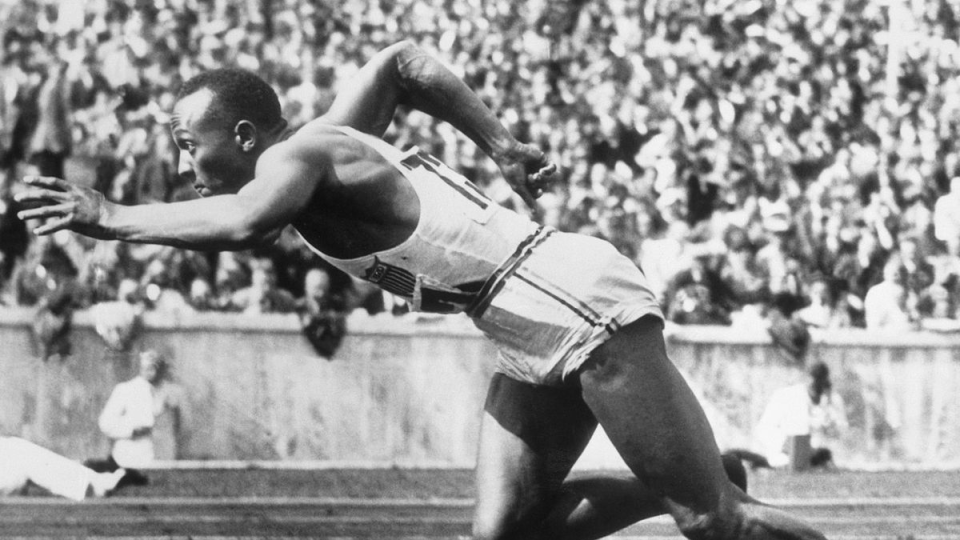
Intersections of race, gender, science, & sports
If you know about our Sportsology exhibit at the Science Museum of Minnesota, you know that there’s science behind every swing, penalty kick, and dunk. You may have also toured or read about our Weighing the Evidence exhibit, which encourages us to separate fact from fiction in bad medical science. But what are the intersections of race, gender, science, and sports? Since the 2020 Tokyo Olympic Games have been postponed, below are a few examples pulled from past games, showing how far we’ve come in 124 years of modern Olympic history.
Setting the scene:
The first modern Olympic Games were held in 1896, and it’s important to think about the social and scientific norms of the time with regard to race and gender. In America, this was only 30-odd years after the Civil War, and 24 years before women were granted the right to vote with the passage of the 19th Amendment. During this time period, Native Americans, Black Americans, and other communities of color were still fighting against extreme racism, both socially and at a national policy level. It’s also important to remember that many women were still excluded from voting by both legal and illegal means.
Scientifically, the eugenics movement, which proposed that “superior” characteristics such as intelligence and physical strength were hereditary, and that humans could eliminate “undesirable” characteristics, was in its heyday. Eugenics has since been discredited as not scientifically sound, and largely (rightfully) condemned as dangerous. Any movement that targets a specific group of people as undeserving of basic human rights—including slavery, forced sterilization, and internment camps—has elements of eugenics at its roots.
1900:
The prevailing scientific theory in the late 1800s was that women had lighter brain mass and smaller crania than men, so they were considered mentally inferior (this is called neurosexism, and it’s terrible and interesting in its own right!). As such, while women were allowed to participate in the 1900 Games in Paris, a mere 22 women (all white) rounded out the total of nearly 1,000 athletes. The female participants were limited to the sports of tennis, sailing, croquet, golf, and equestrian events; it was not until the introduction of women’s boxing in the 2012 Games that every sport included women.
1904, 1912:
Women competed in the 1904 Games, but the St. Louis-based events featured non-white individuals performing “feats of strength” to prove that white Americans were the most physically superior. However, the racist goals of the event were met with reality and athletic excellence. George Poage became the first Black American to medal, and marathoner Frank Pierce became the first Native American to participate in the games. Pierce paved the way for Jim Thorpe, of the Sac & Fox Nation, who competed in and won gold medals in the decathlon and the pentathlon events in the 1912 Games. Thorpe is widely considered to be one of the greatest American athletes of all time.
1936:
Next let’s visit the 1936 Olympics in Berlin. The 1936 Games were an opportunity for genocidal dictator Adolf Hitler to promote his ideals of white supremacy and antisemitism, views that were bolstered by the “science” of eugenics. Once again, reality proved bad science wrong. Jesse Owens, a Black American, became the winningest athlete at the games with four gold medals in the sprint and long jump events. Owens also set three world records, which was seen by many as a direct rebuttal to the idea of white superiority.
It should be noted that while Owens was celebrated on the national stage, he was still a Black man who returned home to a deeply segregated America where he still faced discrimination. He is quoted as saying, “I wasn’t invited to shake hands with Hitler, but I wasn’t invited to the White House to shake hands with the president, either.”
Today:
There are many more intersections of race, gender, science, and sports, as well as more dimensions of equity, access, and privilege—these are just a few examples! When we know better we do better, and athletes and sports-lovers benefit from better science that shows that when it comes to race and gender on a biological level, we’re more alike than we are different. However, there are still barriers to overcome for athletes of color, issues of access for people with differing abilities, and obstacles to equity for members of the LGBTQIA+ community. Knowing this history is essential for us to keep improving the world of athletics for everyone, calling out the need for change and keeping us from backsliding to less equitable practices.